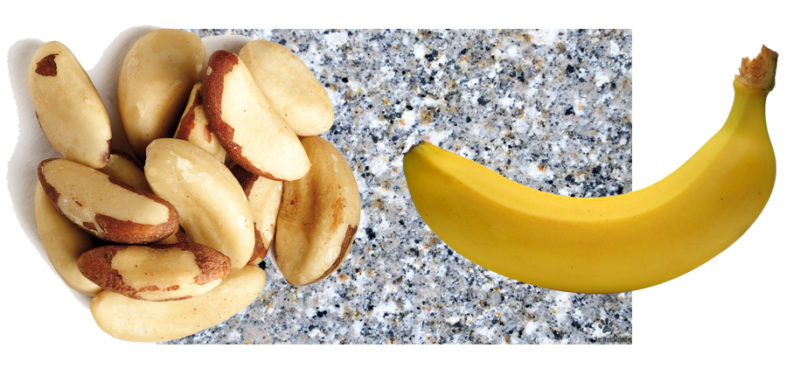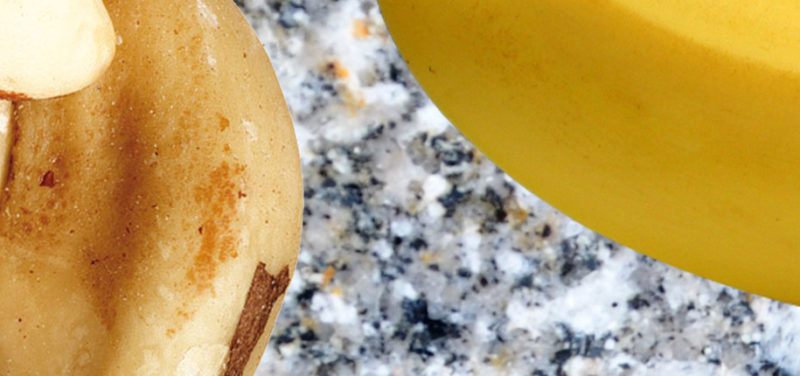Everyday Items That Emit Natural Radiation
It’s no secret that when an x-ray image is taken of the human body, the body is exposed to a small dose of radiation. This is necessary in order for the radiologist to determine a patient’s medical problem. Be assured that our Radiology Department at Cincinnati Children’s makes every effort to reduce the amount of radiation that we use to preform our x-ray exams.
Our bodies are exposed to natural radiation or “background radiation” on a daily basis. Listed below are three everyday items that emit some form of radiation.
 Image: (lf-rt) Brazil Nuts, Granite and Banana.
Image: (lf-rt) Brazil Nuts, Granite and Banana.
- Brazil Nuts
- Well, the ones that come from Brazil, because Brazil tends to have more radium in the ground. The roots of the Brazil nut tree grow so deeply into the ground that they absorb large amounts of radium. Don’t worry however; even though they are 2-3 times more radioactive than bananas, they will give you far less radiation than a simple dental x-ray.
- Granite Kitchen Counter Top
- Granite is a popular building material for homes and businesses. It is also a rock that can contain radium, uranium and thorium. These radioactive elements decay over time into a colorless, odorless gas called radon. Radon coming up underneath homes from the soil is more of a common problem and greater health risk than radon coming from your granite tops. Also, granite from your kitchen or bathroom is more likely to be diluted since those are the rooms that tend to be well ventilated.
- Bananas
- Bananas have potassium, which is an essential nutrient used to maintain fluid and electrolyte balance in the body. The radioactive isotope of potassium is about 0.01% of potassium. That means any given banana contains 45 micrograms of radioactive potassium. Can you get radiation sickness from eating bananas? You will certainly die from radiation poisoning if you are able to eat 5,000,000 bananas at once.
These are some of the examples of the everyday natural radiation that we are exposed to. In all likelihood you have more of a chance of dying from old age than from radioactive poisoning from these three items. Be assured that the Department of Radiology at Cincinnati Children’s has taken many steps to lower radiation and is proud to be a leader in radiation safety.
You can learn more about radiology tests and medical radiation by visiting Image Gently.

 Image: (lf-rt) Brazil Nuts, Granite and Banana.
Image: (lf-rt) Brazil Nuts, Granite and Banana.